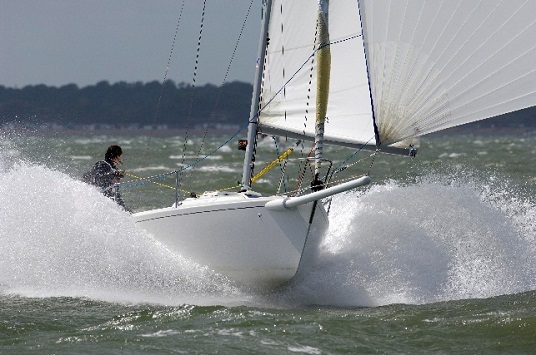J80 Sailing Guide
Welcome to the Ultimate sails J80 class sailing guide The tips and hints in in this guide come from many years experience in the class and will give you an insight in how to set up and sail your J80 with Ultimate Sails. Combine this with our tuning guide to improve the performance of your J80 and help you move further up the fleet.
Mainsail Trim
When you’re getting started, the goal is to power up the main just enough to have a decent amount of weather helm, but not so much that the boat struggles to accelerate in gusts.
Your go-to tools for this are the mainsheet, traveller, backstay, vang, and outhaul:
-
For the outhaul, in light winds, leave a 100mm gap between the sail’s foot and the boom. Gradually tighten it as the wind picks up—tight enough in a breeze to cause some distortion in the sail’s foot.
-
Keep the Cunningham slack at first. Only tighten it once you’re occasionally overpowered; gradually remove the luff wrinkles without over-tightening and distorting the sail.
In light airs, both the backstay and vang should be loose, giving you full control over the sail shape with the mainsheet and traveller. In this case, trim the main so the top tell-tale flies 50–70% of the time. Use the traveller to pull the boom towards the centreline by moving it to windward.
Once the breeze strengthens and you have to ease the traveller to manage the power, it’s time to bring in the backstay and vang to shape the mainsail. At this point, it’s tricky to keep all the tell-tales flying perfectly, so instead, rely on the feel and balance of the helm to help fine-tune the trim.

To sail the J80 at its fastest in fully powered conditions, lock off the mainsheet and use the traveller to handle gusts. The vang and backstay will manage the drive and power in the main, helping you balance the helm. When everything is dialled in, you’ll get a reasonable amount of weather helm, and as a gust hits, easing the traveller should allow smooth acceleration with the helm feeling light, almost neutral—neither weather nor lee helm.
If you tighten the backstay and vang too much, you’ll end up with neutral helm even before a gust, which hurts your pointing ability and makes the boat feel off, forcing you to oversteer with the rudder. On the flip side, if you don’t tighten the backstay and vang enough, the mainsail will flog in a gust, and the helm won’t neutralise. You’ll need to find the right balance by feeling the helm and observing how the boat accelerates in gusts. Tighten the vang and backstay to de-power the mainsail, and ease them to power up.
For efficient de-powering, the vang controls the lower third of the mainsail, while the backstay works on the top two-thirds. Avoid over-tightening the vang, as this can cause vertical luff starvation creases running from the mast towards the clew, especially around the track feed above the gooseneck. If you spot these creases, ease the vang and apply more backstay. Conversely, if there’s too much backstay and not enough vang, the bottom of the sail will become too full, leading to backwinding when you ease the traveller in a gust, as the sail falls into the jib’s exhaust.
Mastering this balance will help you keep the J80 flying smoothly and efficiently!
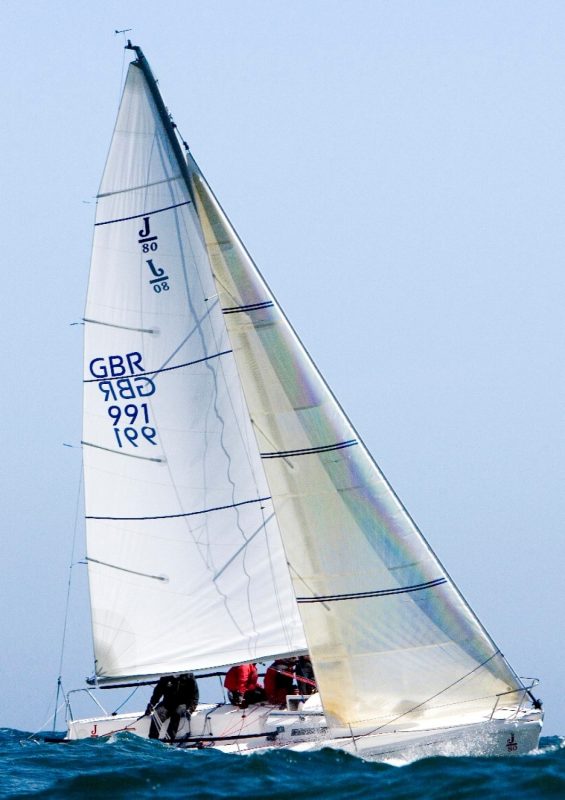
JibTrim
The J80 Jib responds a lot to sheet tension, so trimming it constantly can really boost speed. The sheets are ‘cross winched’, meaning the loaded sheet sits on the windward winch, making it easier for the trimmer to adjust without leaving the rail. The clew is close to the turning block, so the jib car position is key—there are just three positions used across the wind range (check the tuning guide for details).
Halyard tension also needs adjusting as the wind changes. We suggest adding the optional cabin top winch for the jib halyard to make these tweaks quicker and easier as conditions change. Keep the halyard on the winch, ready for adjustments. In lighter winds, the jib should show some horizontal creases along the luff. As the wind picks up, gradually increase the halyard tension until the luff is tight in maximum power conditions.
The J80 Jib has three tapered vertical battens in the leech, but they can be installed the wrong way round, which slows things down. Always make sure the thicker end of each batten is at the leech and mark them with arrows as a guide.
As the wind builds, you might need to tighten the leech line to stop it vibrating (or ‘motoring’). Use just enough tension to stop the vibration—too much will distort and hook the leech. Over time, as the sail ages, you may reach a point where you can’t stop the motoring without heavily tightening the leech line and distorting its shape. That’s when you’ll know it’s time for a replacement!
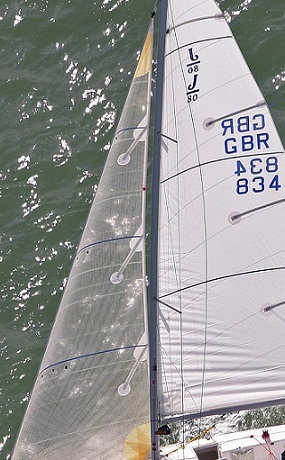
Downwind Sailing
Trimming the mainsail downwind is pretty simple. Wait until you round the mark to ease the vang and backstay—doing it too early powers up the mainsail right when you’re trying to bear away, which is far from ideal. Let the cunningham off completely and ease the outhaul so there’s about a hand’s width gap between the sail’s foot and the boom.
Once you’re heading downwind with the asymmetric hoisted, adjust the vang to keep the leech end of the top batten parallel to the boom. Watch the top batten—it tends to invert if you ease the vang too much, and that’s definitely slow! Ease the backstay again until there’s just a bit of load on it, but make sure there’s still enough tension to keep the mast straight and prevent it from inverting.
Make sure to fully hoist the spinnaker halyard. As for the tack line, pull it on tight, except when sailing very low in medium winds—then you can ease it up to 30cm to let the luff rotate more to windward.
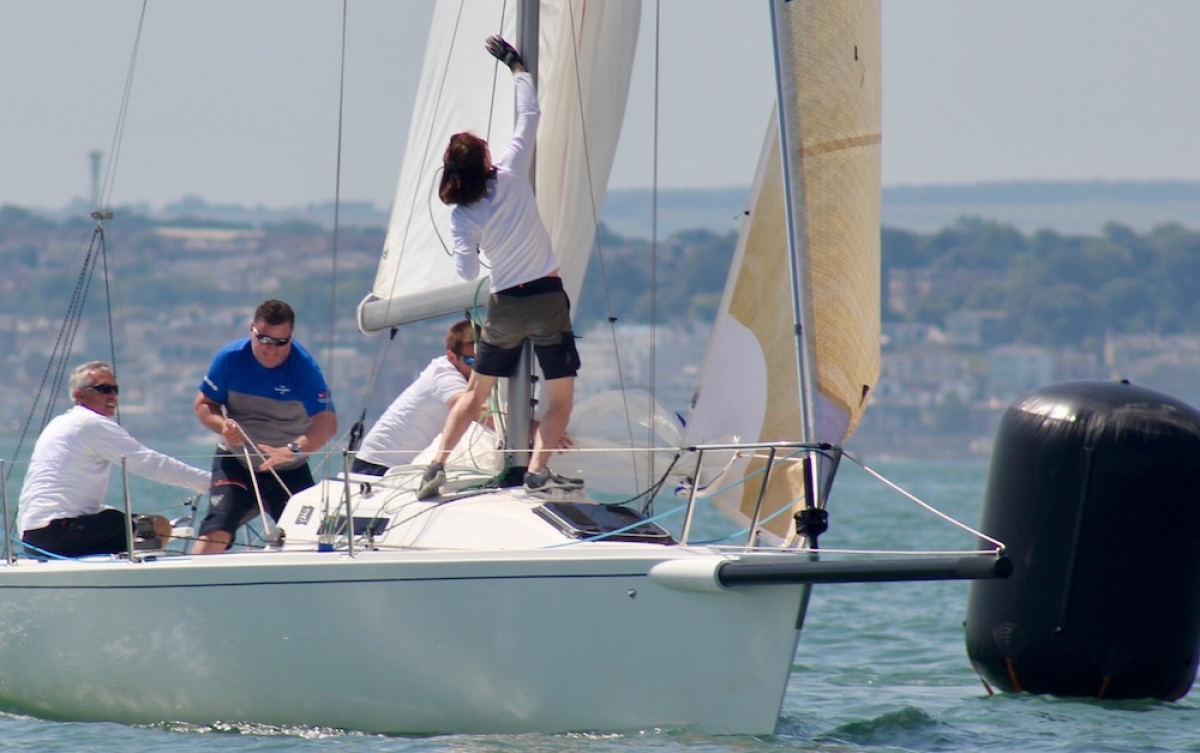
Downwind sailing in the J80 is all about finding the right angles and keeping the spinnaker perfectly trimmed, which takes everyone’s full focus. The tactician plays a key role by keeping a close eye on the competition and sharing insights with the spinnaker trimmer and helmsman. Together, they use this information to balance the pressure in the spinnaker sheet with the boat’s downwind angle to get the best performance compared to the opposition.
Paying attention to what’s happening around you is absolutely vital for strong downwind sailing. The fastest angle and trim aren’t something you can figure out in isolation—it’s all about constant comparisons with the boats nearby to judge your VMG (Velocity Made Good).
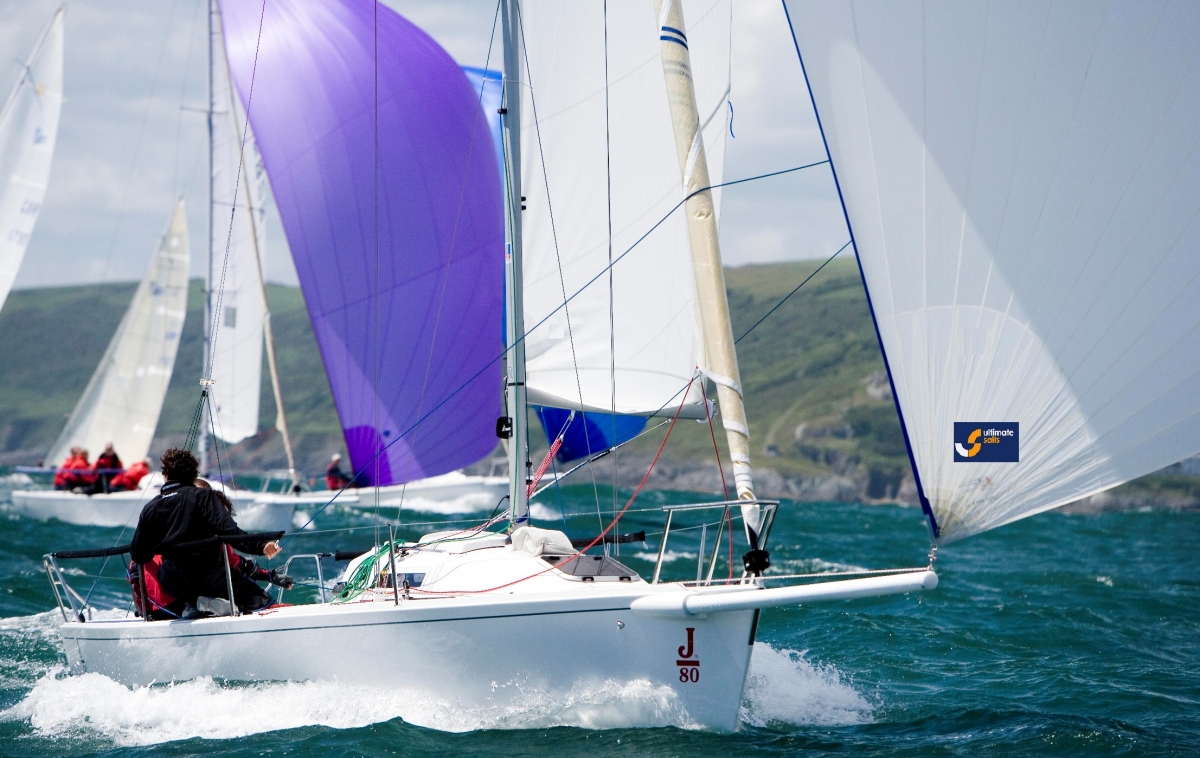
Practising spinnaker trim and steering is only part of the equation when sailing downwind. For those new to asymmetric spinnakers, there’s a lot to pick up. The J80’s downwind angles give you way more tactical flexibility compared to conventional boats and symmetrical spinnakers. Spot a gust? Gybe towards it, run deep, or come high to stay in it. The J80 thrives on even the slightest extra pressure, so it’s crucial to stay in as much wind as you can. If you’re not actively looking for gusts and positioning the boat to catch them, others will leave you behind.

In light to medium winds, the focus should be on sailing low. Heel the boat to windward to help the sail rotate further into the clear air on the windward side. Work on driving the boat deeper, as the real gains come from getting low and positioning yourself to leeward of other boats.
You won’t be steering a fixed course—constant adjustments are key. Keep an open, ongoing dialogue between the trimmer, helm, and tactician to make the most of the conditions and maximise performance.
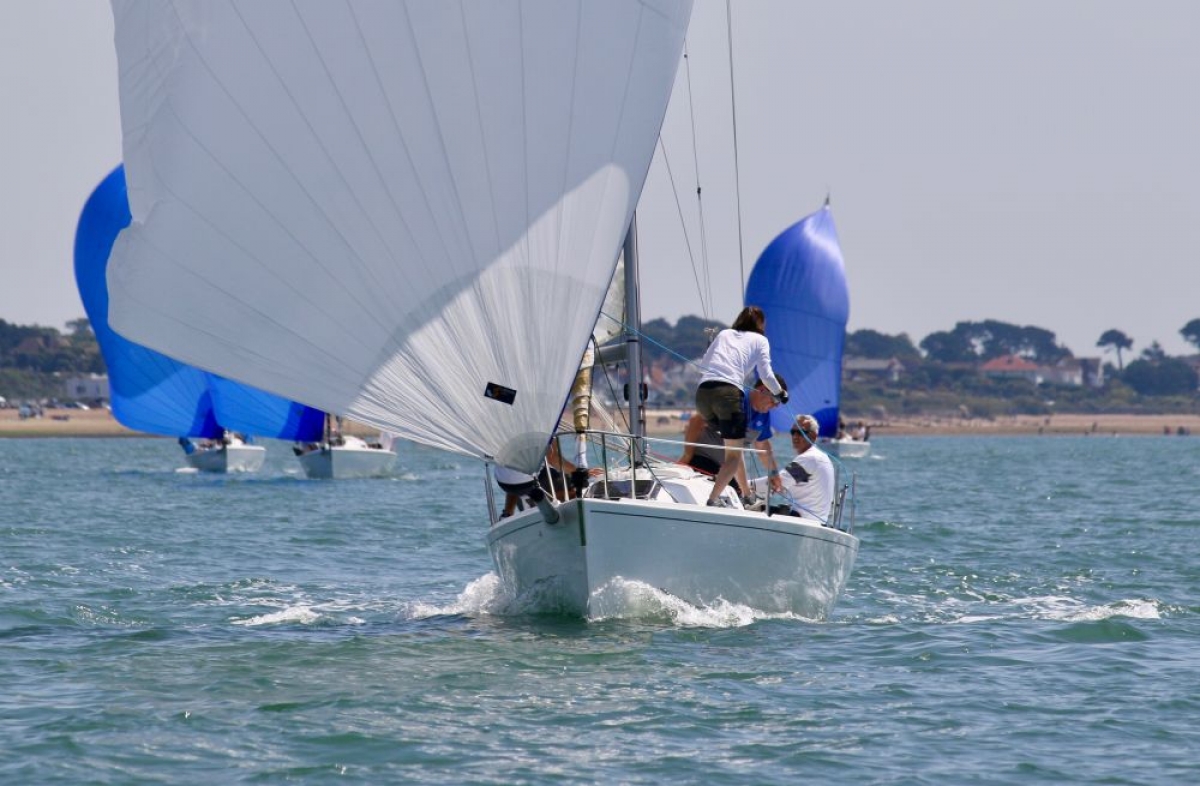
Build up your speed first before bearing away in a gust or on a wave. Once the breeze picks up and the spinnaker starts loading up, focus on sailing higher to get the boat planing. Keep an eye on the gusts—pressure is everything! If you stay in it, you’ll come out on top.
Sailing fast downwind in the J80 is an art that takes practice to perfect, but with Ultimate Sails, you’ve got the best gear to help you excel.
